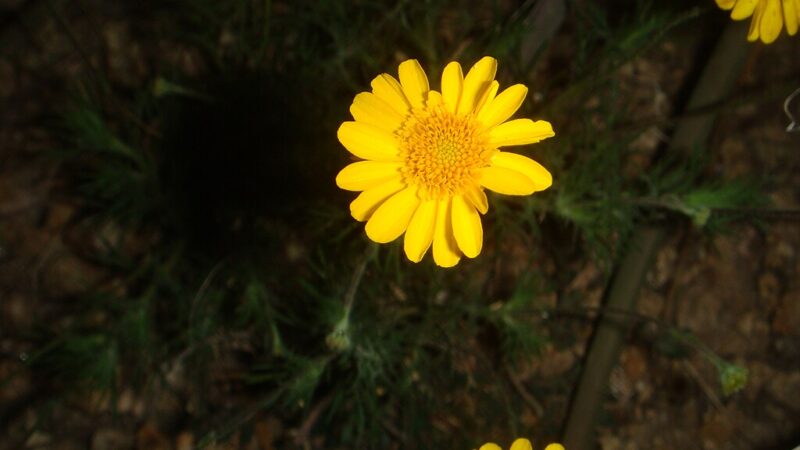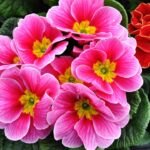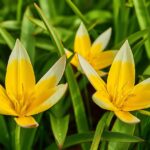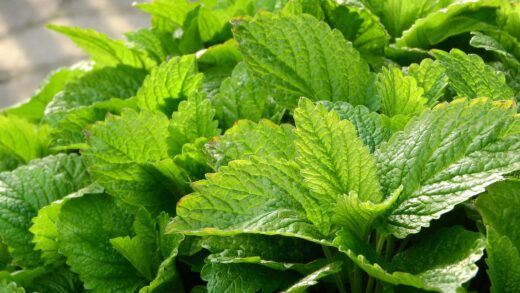The care of the Dahlberg daisy

The Dahlberg daisy, known for its cheerful, yellow, daisy-like flowers and fine, feathery foliage, is a delightful addition to any garden space. This low-growing, spreading annual brings a touch of sunshine and delicate texture to borders, rock gardens, containers, and hanging baskets. Its resilience and relatively low maintenance requirements make it a popular choice for both novice and experienced gardeners seeking long-lasting color throughout the warmer months. Understanding the fundamental needs of this plant, from its preferred soil conditions to its optimal light exposure, is the first step toward cultivating a vibrant and healthy display that will grace the garden with its charming presence from spring until the first frost.
Originally native to the hot, arid regions of Texas and Mexico, the Dahlberg daisy has adapted to thrive in conditions that mimic its natural habitat. This means it has a high tolerance for heat and a remarkable ability to withstand periods of drought once it has become established. The plant’s lacy, almost fern-like leaves are not just aesthetically pleasing; they are also an evolutionary trait that helps minimize water loss in sunny and windy environments. Its profuse blooming habit ensures a continuous show of bright, one-inch-wide flowers that attract beneficial pollinators such as small bees and butterflies, contributing to the overall health of the garden ecosystem.
Cultivating the Dahlberg daisy successfully involves appreciating its preference for a “less is more” approach to care. Unlike many garden annuals that demand rich soil and constant moisture, this plant performs best in less fertile conditions and can suffer from overwatering. Providing it with the right environment from the outset will prevent many common problems and encourage vigorous, compact growth. Its mounding habit, typically reaching about six to twelve inches in height and spreading up to a foot and a half, makes it an excellent groundcover or filler plant that can beautifully cascade over the edges of pots and walls.
The versatility of the Dahlberg daisy is one of its most celebrated attributes. It can be used effectively as an edging plant along pathways, where its delicate foliage can soften hard lines and its bright flowers can create a welcoming border. In mixed containers, it pairs wonderfully with other sun-loving annuals that have similar water needs, such as lantana, verbena, or portulaca. Furthermore, its fragrant foliage, which releases a pleasant scent when brushed against or crushed, adds a sensory dimension to the garden experience, making it a multifaceted plant that engages more than just the sense of sight.
Understanding the plant’s origins
To provide the best possible care for the Dahlberg daisy, it is essential to understand its natural background. This plant is a native of the southwestern United States, specifically Texas, and northern Mexico, regions characterized by high heat, intense sunlight, and often poor, rocky soils. This heritage has shaped its evolution, resulting in a plant that is exceptionally well-suited to challenging garden conditions. Its genetic predisposition for drought tolerance and love of sun are direct results of the arid landscapes from which it originates. Replicating these conditions is the key to unlocking its full potential in a cultivated setting.
More articles on this topic
The botanical name, Thymophylla tenuiloba, provides clues to its characteristics; Thymophylla refers to the thyme-like scent of its leaves, while tenuiloba describes its finely divided, slender-lobed foliage. This delicate, almost ethereal foliage is a critical adaptation for its native climate, as the small surface area of the leaves helps to reduce moisture evaporation under the harsh sun. The plant’s low, spreading growth habit is another adaptation that helps it conserve moisture and withstand strong winds. By keeping these origins in mind, gardeners can make more informed decisions about where to plant it and how to care for it throughout its lifecycle.
The ecological role of the Dahlberg daisy in its native environment is also noteworthy. It often grows in disturbed areas, such as roadsides and rocky slopes, where it can quickly colonize and provide ground cover. Its bright flowers are an important source of nectar for local pollinators, supporting the biodiversity of the region. In a garden setting, it continues to play this beneficial role, attracting small native bees, butterflies, and other insects that aid in the pollination of other plants. This makes it not only an ornamental choice but also an ecologically functional one.
Therefore, when selecting a location and preparing the soil, think of the sun-baked plains of Texas. Avoid heavily amended, overly rich garden soils and shady, damp corners of the garden. Instead, choose a spot that receives unrelenting sunshine for most of the day and has soil that drains with exceptional speed. This approach, which honors the plant’s evolutionary history, will result in a healthier, more floriferous, and more resilient Dahlberg daisy that requires minimal intervention to thrive and provide continuous beauty.
Ideal soil and location
Selecting the perfect location is the most critical factor in ensuring the success of the Dahlberg daisy. This plant is an unapologetic sun worshipper and requires a minimum of six to eight hours of direct, unfiltered sunlight each day to produce its iconic abundance of flowers. Locations that are shaded for significant portions of the day will result in leggy, stretched-out growth and a noticeable reduction in blooming. The ideal spot is one with a southern or western exposure, where the plant can bask in the afternoon sun without risk of scorching, as it is highly adapted to intense heat.
More articles on this topic
The soil composition is just as important as the amount of sunlight. Dahlberg daisies demand excellent drainage and will not tolerate “wet feet” or soil that remains soggy for extended periods. Heavy clay soils that retain moisture must be amended to improve their structure and porosity. Incorporating materials such as coarse sand, small gravel, or perlite can significantly enhance drainage and create the loose, airy medium that the plant’s roots require. In many cases, it is easier to grow this plant in raised beds or containers where complete control over the soil mix is possible.
When it comes to soil fertility, the Dahlberg daisy paradoxically performs better in soils that are not overly rich. A lean or average soil is perfectly adequate and can even encourage more prolific blooming than a heavily fertilized one. Rich soils tend to promote excessive foliage growth at the expense of flowers, resulting in a lush but less colorful plant. Therefore, it is advisable to avoid incorporating large amounts of compost or rich organic matter into the planting area. A simple, well-draining garden loam or a commercial potting mix formulated for cacti and succulents is often an excellent choice.
For container gardening, the choice of pot also plays a role in maintaining proper soil moisture levels. Unglazed terracotta or clay pots are an excellent option because their porous nature allows soil to dry out more quickly between waterings, mimicking the natural arid conditions the plant prefers. Ensure any container used has ample drainage holes at the bottom to prevent water from accumulating. This combination of a sunny location, well-draining soil, and an appropriate container sets the stage for a healthy, thriving Dahlberg daisy that will perform beautifully throughout the season.
Watering and moisture requirements
Watering the Dahlberg daisy requires a careful balance, guided by its drought-tolerant nature. When the plants are young and newly transplanted, they need consistent moisture to help their root systems become established. During this initial period, which typically lasts for a few weeks, the soil should be kept lightly moist but never saturated. This encourages the roots to grow deep into the soil in search of water, which is crucial for building the plant’s long-term resilience to dry conditions. Check the soil every couple of days and water when the top inch feels dry to the touch.
Once the plant is well-established, its water needs decrease significantly. An established Dahlberg daisy is remarkably drought-tolerant and prefers the soil to dry out completely between waterings. The most common mistake gardeners make with this plant is overwatering, which can quickly lead to root rot and other fungal diseases. It is far better to err on the side of underwatering than overwatering. In most climates, a deep watering once a week during the hottest parts of summer is sufficient, and even less may be needed during cooler or rainier periods. Always check the soil moisture before reaching for the hose.
Observing the plant itself can provide valuable cues about its watering needs. If the delicate foliage begins to look slightly wilted during the peak heat of the day but recovers as temperatures cool in the evening, this is normal and not necessarily a sign that it needs water. However, if the wilting persists into the morning, it is a clear indication that the plant is thirsty and a deep watering is required. Conversely, yellowing leaves, especially near the base of theplant, are often a classic symptom of overwatering and a warning sign that the watering frequency should be reduced.
For plants grown in containers or hanging baskets, more frequent watering will be necessary compared to those in the ground. The soil in containers heats up and dries out much faster, especially on hot and windy days. During the peak of summer, container-grown Dahlberg daisies may need to be watered every other day or even daily. The key principle remains the same: allow the top inch or two of the soil to become completely dry before watering again. Water thoroughly until it runs out of the drainage holes, ensuring the entire root ball is hydrated, then let it dry out again.
Fertilization and feeding schedule
The Dahlberg daisy is a light feeder and does not require a rich diet of fertilizers to perform well. Its adaptation to poor, rocky soils in its native habitat means it is accustomed to thriving with minimal nutrients. In fact, excessive fertilization is one of the primary causes of poor flowering in this plant. When provided with too much nitrogen, the plant will channel its energy into producing an abundance of lush, green foliage, often at the direct expense of its charming yellow blooms. Therefore, a conservative approach to feeding is always the best strategy.
For Dahlberg daisies planted in garden beds with average soil, supplemental fertilization is often unnecessary for the entire growing season. The nutrients naturally present in the soil are typically sufficient to support healthy growth and a continuous display of flowers. If the soil is exceptionally poor or sandy, a single application of a balanced, slow-release granular fertilizer at the time of planting is all that is needed. Choose a formulation with a lower nitrogen number and higher phosphorus and potassium numbers (e.g., 5-10-10) to encourage bloom production rather than leafy growth.
Container-grown plants will have slightly different needs, as the nutrients in potting soil are depleted more quickly through regular watering. Even in this case, feeding should be done sparingly. A light application of a water-soluble fertilizer, diluted to half the recommended strength, can be applied once every four to six weeks throughout the blooming season. It is crucial not to overdo it; less is definitely more. An alternative is to mix a small amount of a slow-release granular fertilizer into the potting mix at the time of planting, which will provide a steady, low level of nutrients over several months.
Observe the plant’s appearance for any signs of nutrient deficiency, although this is rare. A true deficiency might manifest as pale or yellowing leaves (that is not caused by overwatering) and stunted growth. Only in these cases should a supplemental feeding be considered. For the vast majority of situations, the Dahlberg daisy will be happiest and flower most prolifically when left to its own devices in lean soil. Resisting the urge to pamper it with rich foods and fertilizers is a key lesson in successfully cultivating this beautifully resilient plant.
Pruning and maintenance
Regular maintenance for the Dahlberg daisy is minimal but can make a significant difference in the plant’s overall appearance and blooming performance. The most important ongoing task is deadheading, which is the practice of removing spent or faded flowers. Although the plant will continue to bloom without this step, deadheading encourages it to redirect its energy into producing new buds rather than developing seeds. This results in a more prolific and continuous flowering display throughout the entire season, keeping the plant looking fresh and vibrant.
The process of deadheading is simple and can be done by pinching or snipping off the old flower heads just above the next set of leaves. Because the plant produces so many flowers, this can be done every few days as part of a regular garden stroll. Beyond promoting more blooms, this practice also helps to keep the plant looking tidy and prevents it from self-seeding too aggressively in areas where this is not desired. A well-maintained plant will retain a more compact and attractive shape.
As the season progresses, particularly during the peak heat of mid-summer, Dahlberg daisies can sometimes become leggy or straggly, with long stems and fewer flowers concentrated at the tips. To rejuvenate the plant and encourage a new flush of bushy growth, it can be given a light shearing. Using a pair of garden shears, trim the entire plant back by about one-third of its height. This may seem drastic, but the plant responds very well to this treatment, quickly sending out new side shoots and returning to a full, mounded shape covered in fresh blooms within a couple of weeks.
Apart from deadheading and occasional shearing, the Dahlberg daisy requires very little pruning. Its natural growth habit is already quite dense and mounded, so it does not need to be shaped. The primary focus of any cutting should be on improving the plant’s health and appearance. This includes removing any yellowing or dead foliage at the base of the plant to improve air circulation and reduce the risk of fungal diseases. These simple maintenance tasks, while not demanding, are instrumental in keeping the Dahlberg daisy at its peak performance.
Common pests and diseases
The Dahlberg daisy is a relatively robust and trouble-free plant, but like any garden specimen, it can occasionally fall prey to certain pests and diseases. Fortunately, most issues are preventable by providing the correct growing conditions. The most common problem encountered is root rot, a fungal disease caused by overly wet and poorly drained soil. Symptoms include yellowing leaves, wilting, and a general failure to thrive. The best defense against root rot is prevention: plant in soil with excellent drainage and be extremely careful not to overwater.
Among insect pests, aphids are the most likely to cause trouble. These small, sap-sucking insects tend to congregate on new growth and flower buds, weakening the plant and potentially transmitting diseases. A small infestation can often be controlled by a strong spray of water from a hose, which will dislodge them. For more persistent problems, applications of insecticidal soap or neem oil are effective and environmentally friendly solutions. Always check the undersides of leaves, as this is where aphids often hide.
Spider mites can also become a problem, particularly in very hot, dry, and dusty conditions. These tiny arachnids are difficult to see with the naked eye, but their presence is often indicated by fine webbing on the plant and a stippled or speckled appearance on the leaves. Like aphids, they can be managed with a strong spray of water to increase humidity and by using insecticidal soap or neem oil. Ensuring good air circulation around the plants can also help to deter spider mite infestations.
Less common but still possible are fungal leaf spot diseases or powdery mildew, especially in humid climates or if the foliage is frequently wet from overhead watering. Powdery mildew appears as a white, dusty coating on the leaves, while leaf spots are typically brown or black blotches. To prevent these issues, water the plants at the base to keep the foliage dry and provide enough space between plants for air to circulate freely. If an infection does occur, remove the affected leaves promptly and consider using a fungicide if the problem is severe.
📷Miwasatoshi, CC BY-SA 4.0, via Wikimedia Commons



















